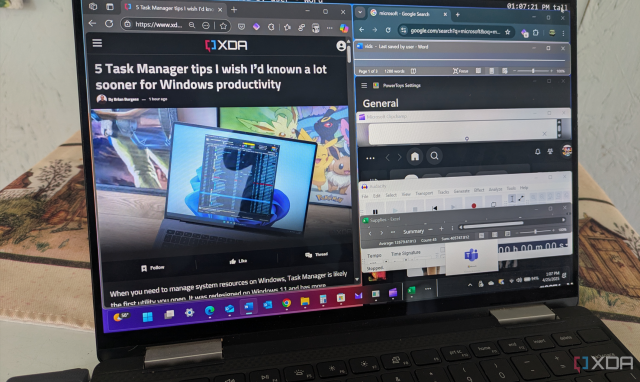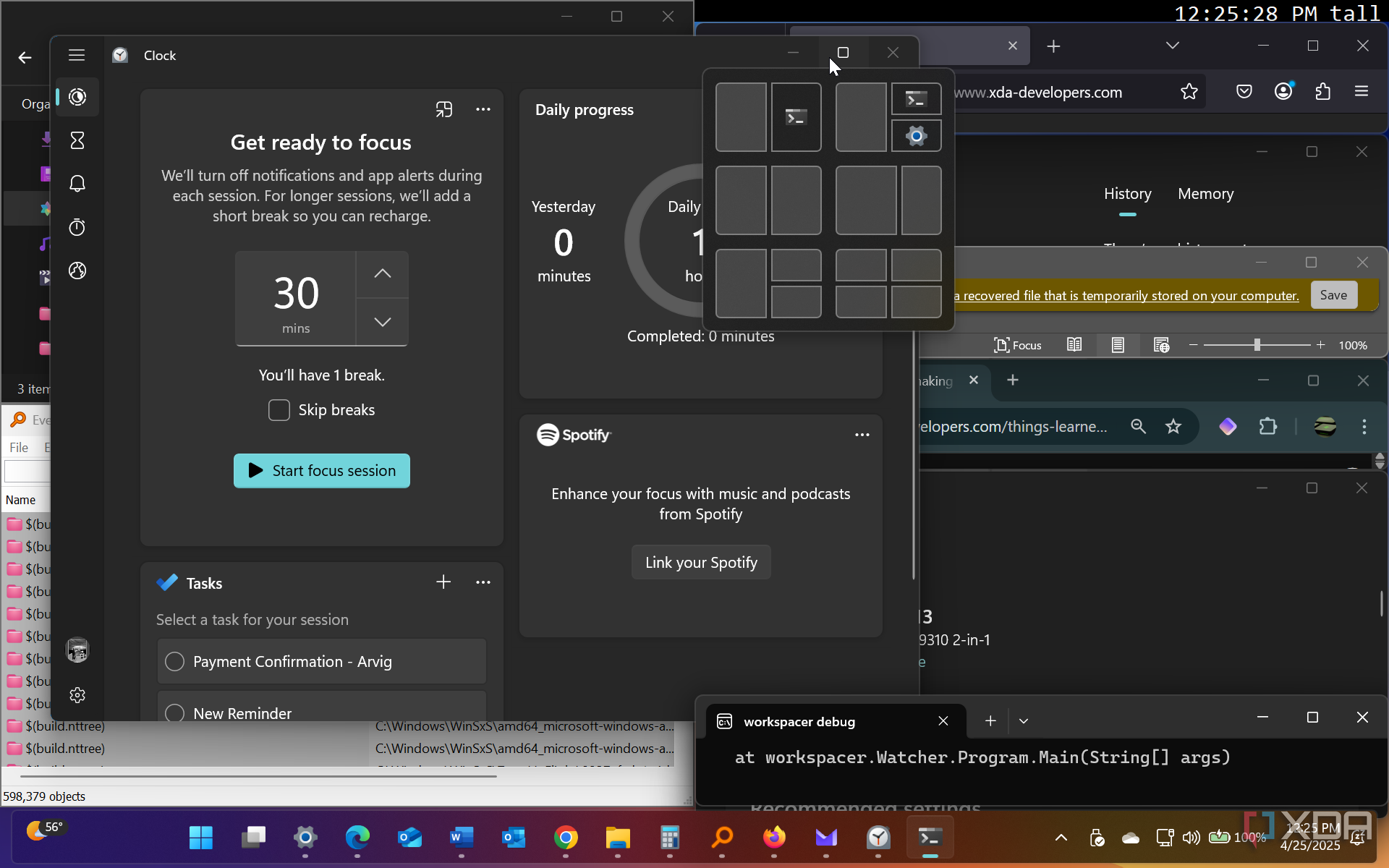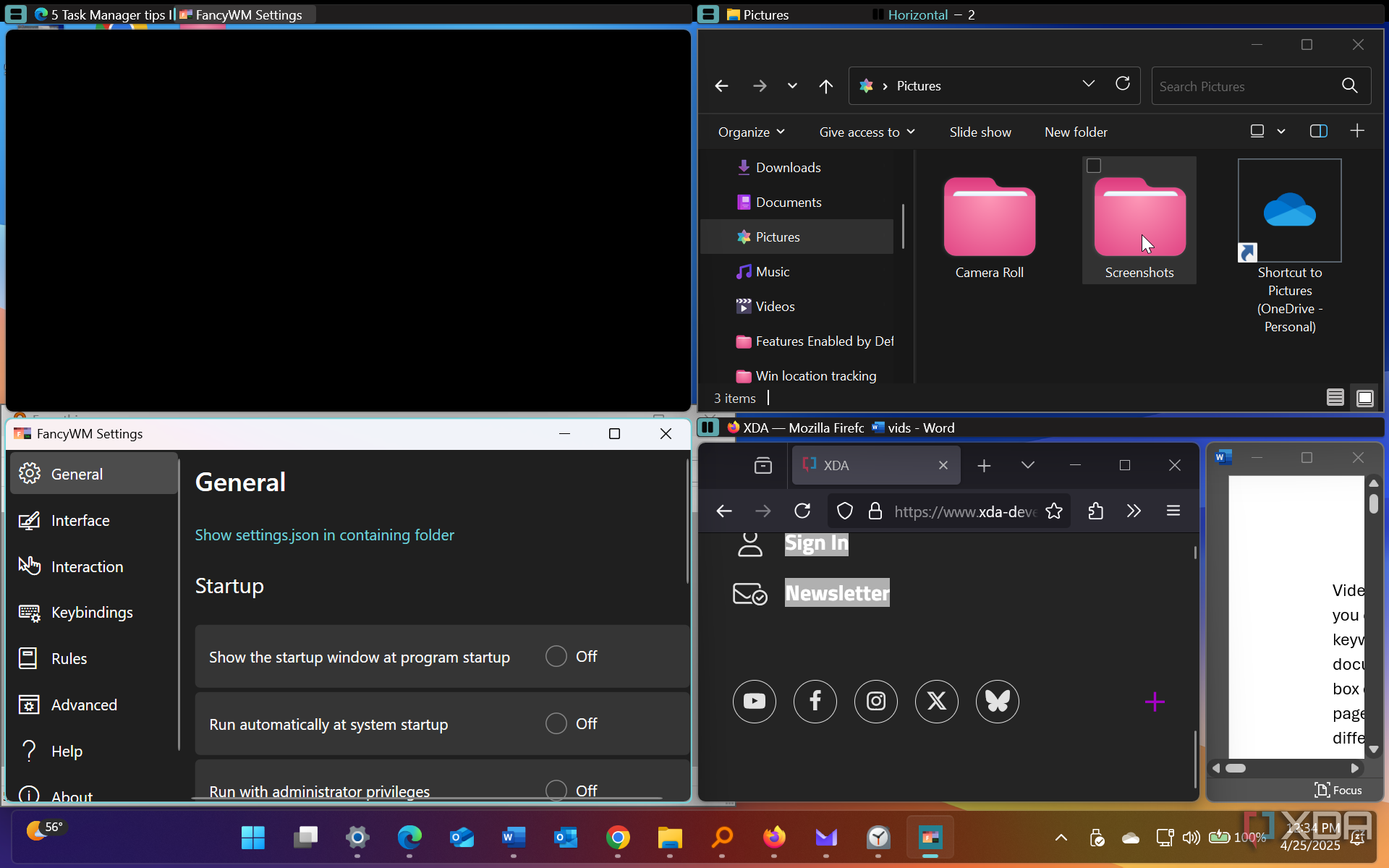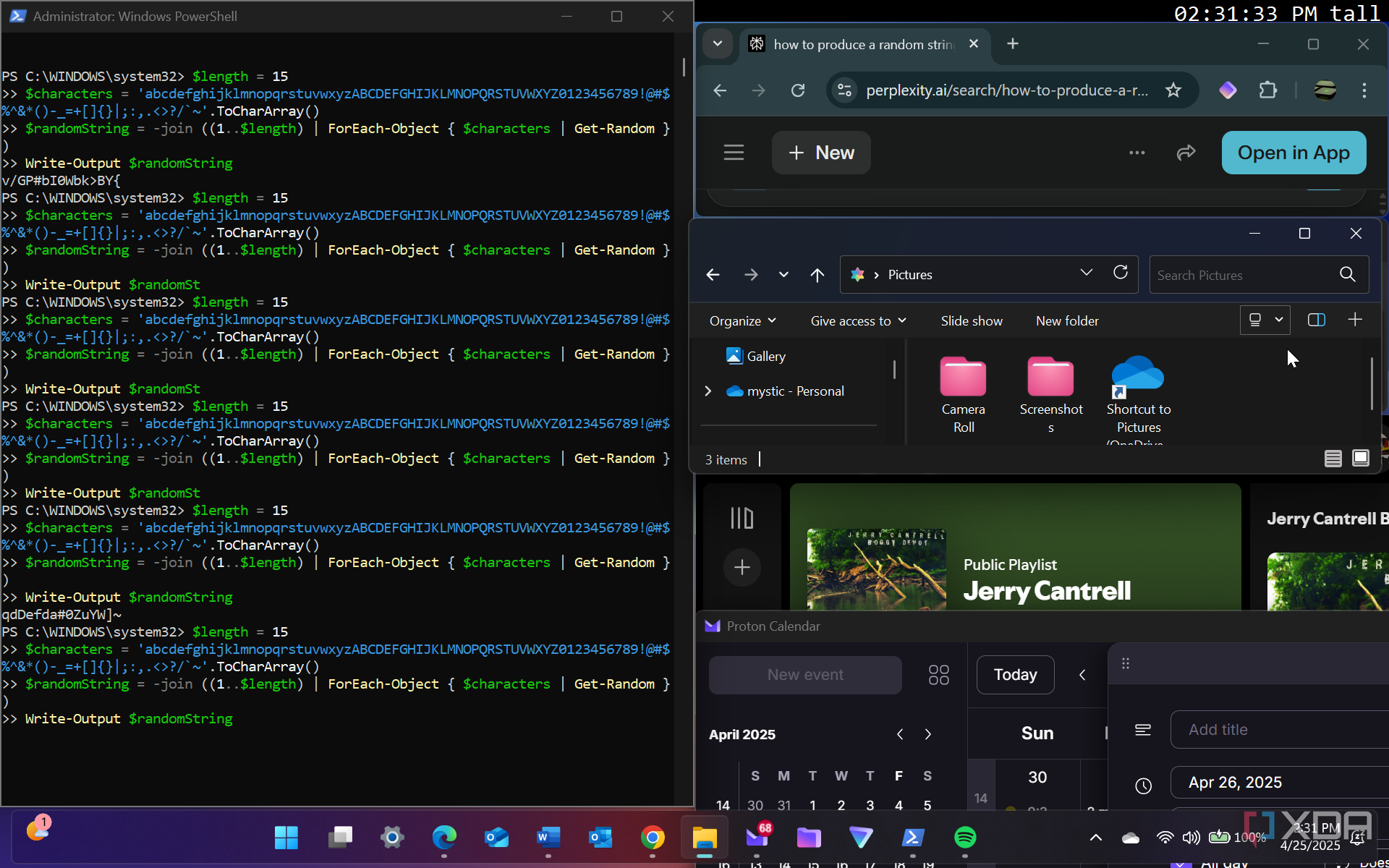I always look for new ways to boost my productivity when working on a Windows PC. I’ve discovered that tiling window managers are a fascinating way to do it. They allow automatic arrangement of the open windows you’re working on to auto-arrange and resize app screens without overlapping. They create a structure that resembles a grid of apps on your screen. But it doesn’t stop there. You can place windows side by side or stack them up. Some allow adjustments on the fly as app windows are opened or closed.
A tiling window manager organizes open apps mathematically by working with the dimensions of your screen. It organizes the cluttered mess of open apps into a fully symmetrically organized layout. Unlike the Snap Layout feature on Windows, a tiling manager provides a more calculated approach to arranging the windows on your screen. While not considered a “true” tiling window manager (according to some in the community), if you have ever used FancyZones (part of PowerToys), it gives you an idea of what a tiling window manager does. In fact, I would call FancyZones a tiling manager, but Microsoft calls it windowing. However, I digress. I was surprised by what I could do to make my Windows experience more productive. These keyboard-driven managers are aimed at power users in response to Microsoft’s default and inefficient window management system. Here are some ways they have worked for me, and they can work for you too.

4
Organization
Tiling window managers scream productivity
You want access to the files and other data you need on your PC to increase productivity. We all have multiple open app windows on our screens, which can be cluttered and messy. A tiling window manager is helpful for managing multiple open windows. For instance, having to move a window just to read a couple of words behind it is unproductive. I like the ability to stack your windows on one side of your screen and work with them full-screen with a quick keyboard shortcut. With everything I need within grasp, I improve my daily productivity. It helps me to stay organized. Also, the main benefit of tiling managers is that the screens never overlap. That allows me to see precisely which windows I need to access next during my workflow. However, it’s worth noting that window overlap varies between apps in my experience. They seem to work better with Windows 10. Additionally, if you have a mod running that utilizes customization tools like Windhawk or Rainmeter, it can impact the overlap.
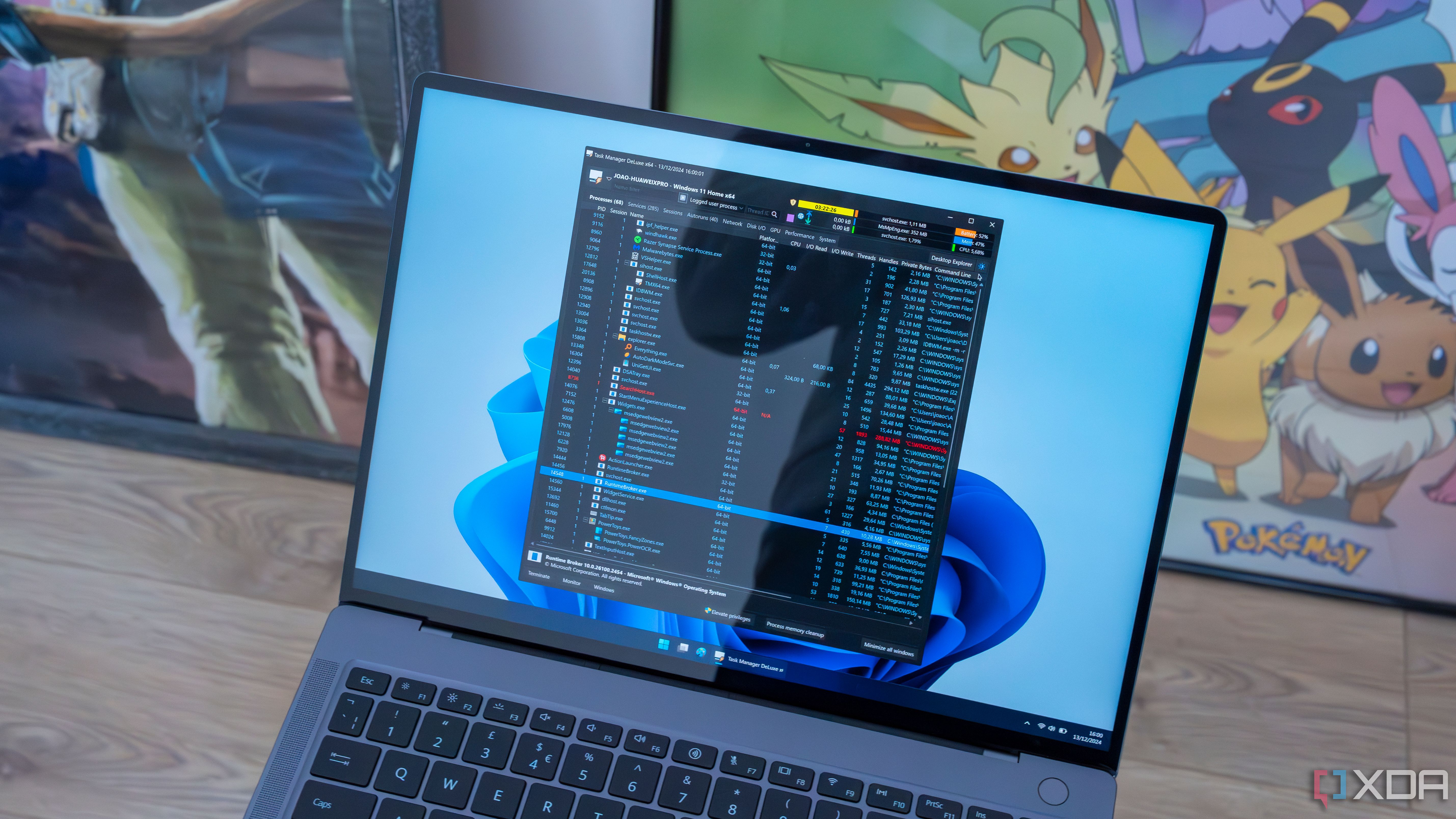
Related
5 Task Manager tips I wish I’d known a lot sooner for Windows productivity
I wish I knew these Task Manager tips to be more productive and you can learn them too.
3
Efficiency
Tiling apps on your screen makes your workflow a breeze
The snap layouts feature included in Windows 11 isn’t getting it right. While the built-in feature lets you snap open windows around, tiling window managers take it to the next level. They allow you to work between apps seamlessly. In addition, most of the functionality is done from the keyboard. Using keyboard shortcuts to manage your open app windows is a power user’s dream; you rarely need to leave the keyboard for your mouse. Also, you can maximize the screen to work in it, and once you’re done, it will return to its spot on the screen when minimized. It creates an explorer-like filing system for open app windows on your desktop. For example, with Workspacer, I am able to stack all my windows on the right side and can open them in the main window on the left.
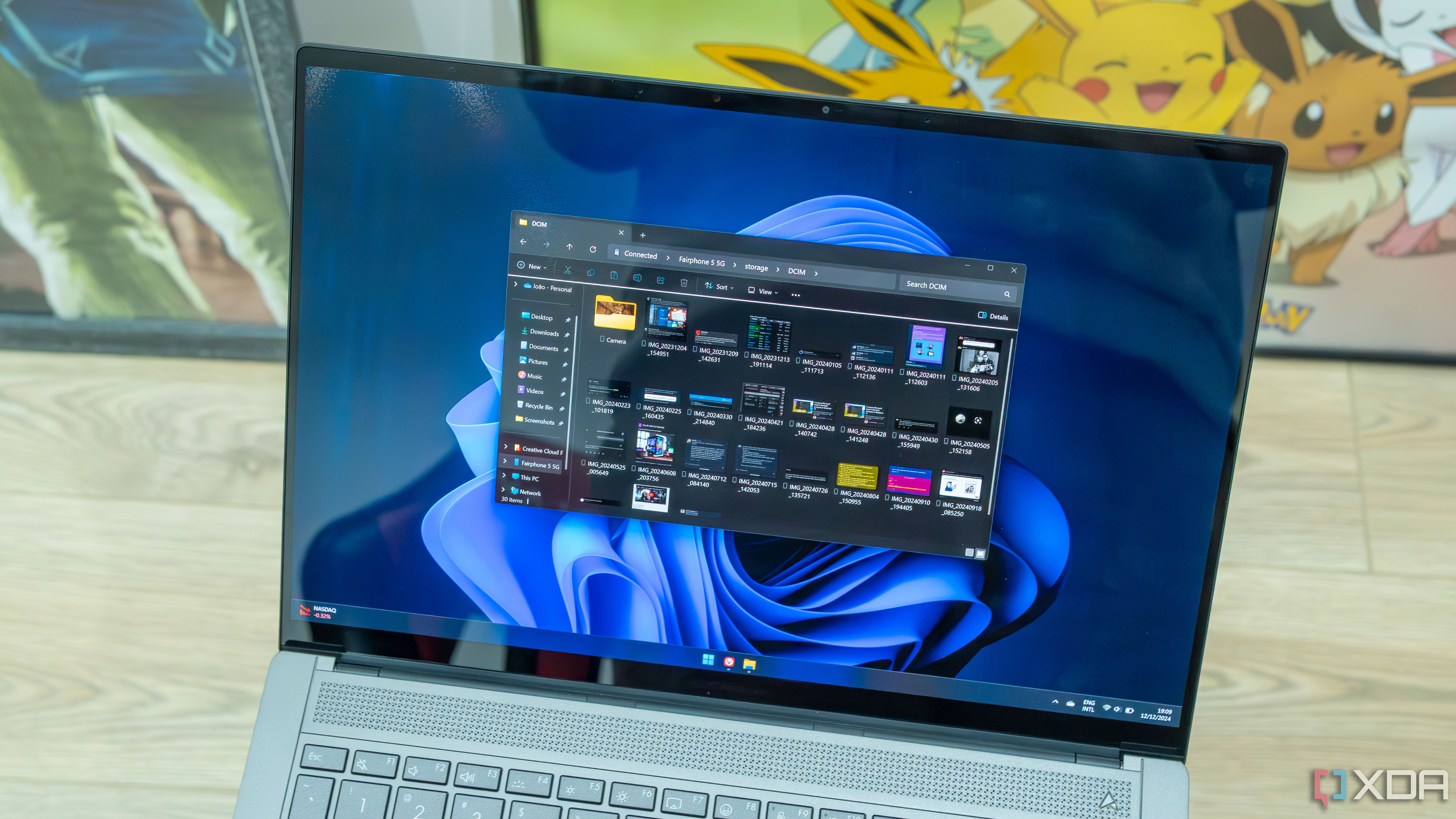
Related
7 tricks to optimize File Explorer for more efficient file management
Optimize File Explorer with these simple tricks to boost productivity and streamline file management on Windows
2
Lots of tiling manager solutions
Lots of tiling window manager apps are available
I’m new to the tiling window community and have discovered that there are several tiling managers, such as FancyWM, Komorebi, and GlazeWM, among others. There are free, open-source, and paid tiling managers out there. While offering different features and settings, they create a similar experience, which allows you to view and work in multiple windows on the screen. There is no more minimizing or moving windows to see what’s behind them. Tiling apps can create custom layouts and rules for arranging windows based on your workflow. Trying different tiling managers from the pool allows me to determine what works best for my situation. Of course, they also have memory, so your window layouts will be the same each time you boot your system.
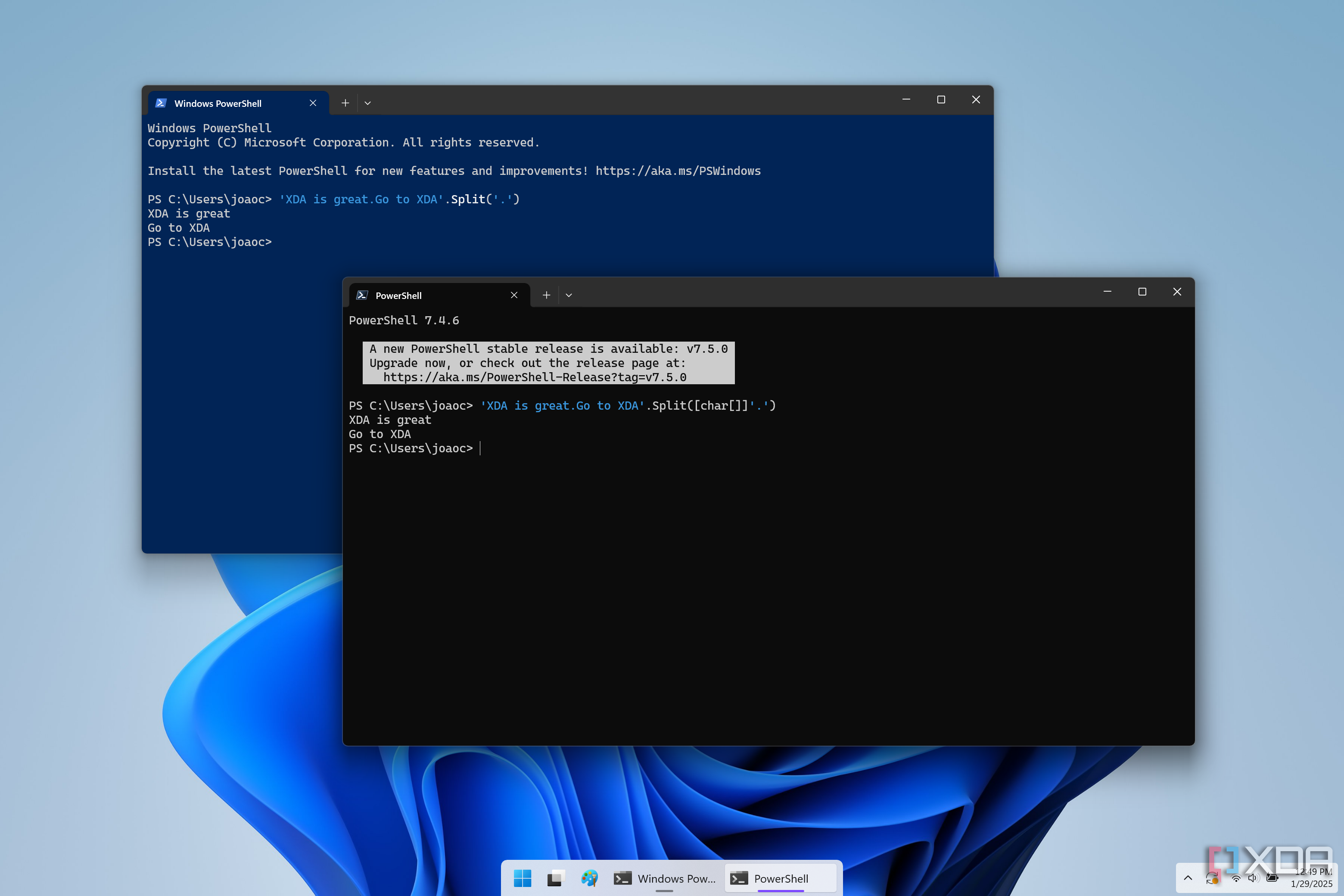
Related
6 PowerShell scripts to automate and speed up your workflow
When you work through the CLI you save a lot of time. Here are PowerShell scripts to speed your workflow.
1
Multi-monitor support
Tiling windows on multiple display setups
I have a dual-screen setup on my main PC, and I was pleased to see that most of the tiling managers that I tried support multiple monitors. Depending on your manager, you may need to access settings to enable it. Once you do, window tiling will be available on both screens, which helps if you need to see several windows simultaneously. I don’t do that because I like a more “loose” feel on my second monitor. I have a 25-inch main display and a smaller 23-inch screen, which I use for less vital work apps. But that’s just how I do it. So, if you want tiling on both screens, you certainly can.

Related
Expand your screen real estate with ease with this dual monitor setup that’s now nearly 40% off
An easy way to add screen to your laptop
A tiling window manager is a tool that power users will love
I have been using different tiling apps during this past week. I am a Windows user, so I’m partial to FancyWM for window management and Workspacer when I need more happening on my display.
You will want to try different tiling solutions to find the one that works best for your workflow. Some are free or open-source, while others require purchasing a license or include in-app purchases. I have tried five different managers, and they all have multiple monitor support, which is a plus. But whichever one you choose, trust me, tiling window managers will increase your productivity. Do you have a favorite tiling window manager?


